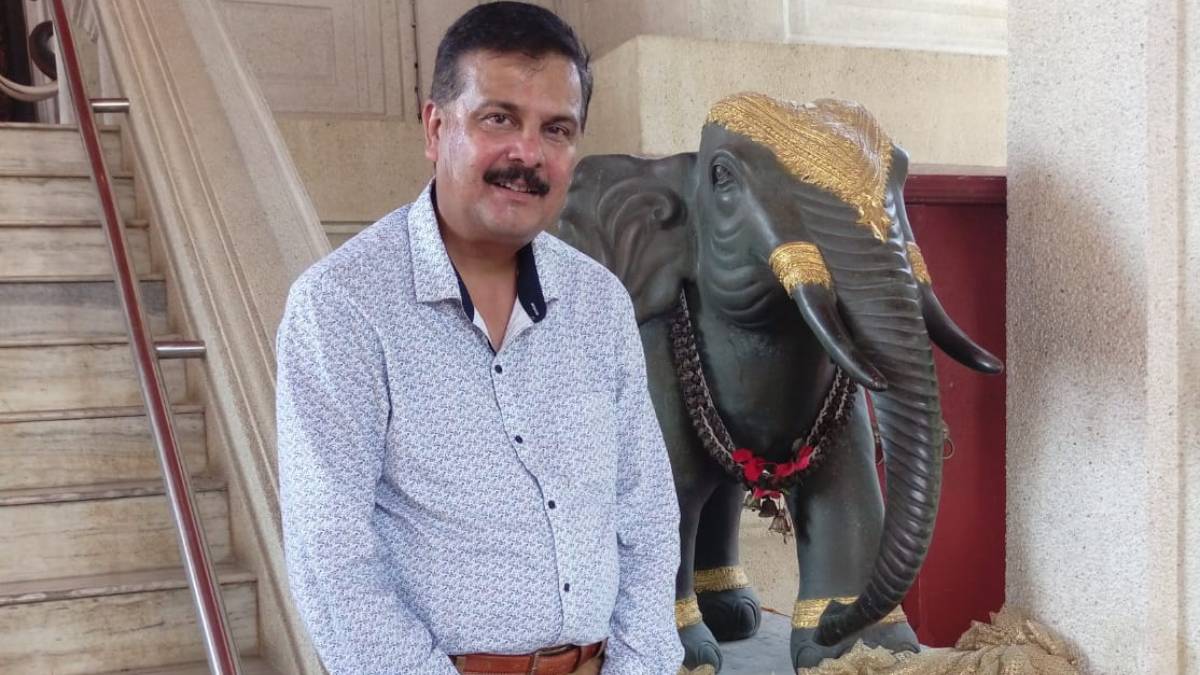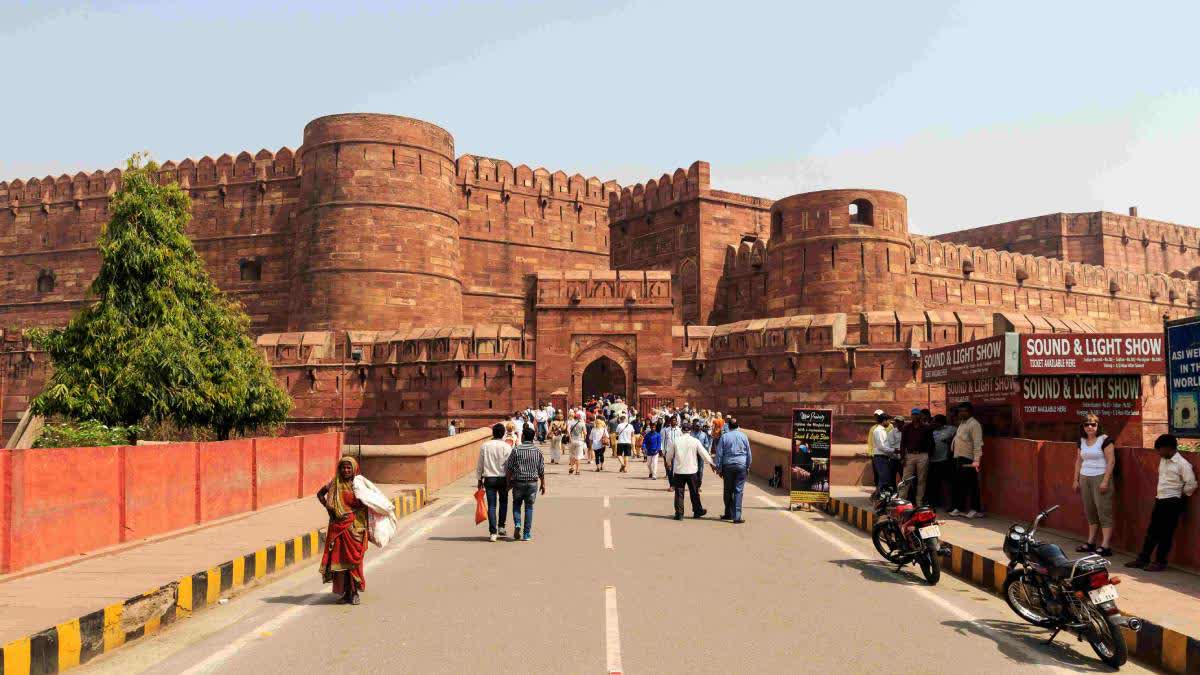Agra: We all have read in history books that the Agra Fort was the centre of governance in the Mughal Era as it housed generations of emperors from Babur to Aurangzeb. Aside from the Mughals, Rajputs, Mughals, Jats and Marathas have been its occupants. Recognising its historic importance, it was accorded the world heritage by Unesco, attracting thousands of domestic and foreign tourists every day.
However, the Archaeological Survey of India (ASI), the conservator of the world-famous red sandstone edifice, is unaware of its builder, as mentioned in response to an RTI query. This reply has also been backed by the Central Information Commission.
In response to the RTI query in June 2023, Mahesh Chandra Meena, public information officer of the Agra Circle of ASI, replied that no information related to the questions asked was available. Such information can be found in contemporary literature. ASI, which functions under the Ministry of Culture, has all information about old heritages.
Dr Devashish Bhattacharya, a resident of Kalibari in the M M Gate Police Station area of Agra, had sought information on three points about the fort under RTI on May 27 — Who built the Agra Fort?, What changes did Emperor Akbar make in it?, and What were the works carried out before its construction?
Bhattacharya said, "The fort is a world heritage monument and ASI should have all the hoary information. The reply from the RTI commissioner was incomprehensible and I appealed to the ASI. Superintendent archaeologist Dr Rajkumar Patel also echoed the answer given earlier. With this, when I approached the Central Information Commission, the matter was heard on November 25 and the verdict, pronounced on November 27, supported the ASI's reply. A detailed report will have to be prepared by reading contemporary history. The ASI is responsible for providing information about the history and preservation of the world heritage. But it does not know the facts. Therefore, I will take this matter to the court".

Senior historian Rajkishore Raje said a mud fort existed in Agra in the 11th century. It was under the control of the Rajputs of the Sikarwar dynasty. From 1089 to 1114, the Khilji sultans repeatedly made inroads into Agra, destroying the fort in the process. Foreign historian Khauda Mir has written in his book 'Havivas Siyara' that this fort was under Khilji control from 1058 to 1059. In 1475, Badal Singh rebuilt it and later it became known as Badalgarh. In 1487, Sikandar Lodhi captured the fort. An earthquake in July 1504 damaged several portions of the fort which was renovated by Lodhi in 1504. Sikandar Lodi then made Agra his capital and Ibrahim Lodhi ascended the throne after his demise.
"I have written the entire history of Agra Fort in the book 'Tarikh-e-Agra'. In 1526, Ibrahim Lodi died fighting Babur's army in the First Battle of Panipat, ending the Lodhi rule and Badalgarh of Agra then came under the first Mughal emperor. It was from Badalgarh that the Mughals got the world-famous Kohinoor diamond. In 1530, Mughal emperor Humayun was crowned here. However, in 1539, Sher Shah Suri defeated Humayun in the Battle of Chausa and captured the Badalgarh Fort. Even after the death of Sher Shah in 1545, the Suri dynasty continued to govern from Badalgarh Fort till 1556. In the second battle of Panipat in 1556, Akbar's general Bairam Khan defeated the Hindu ruler Hemu and captured the fort. Akbar then made Agra his capital and renovated it to its current form using red sandstone," historian Raje said.
The ASI website informs that the fort was constructed by the third Mughal emperor Akbar on the remains of an ancient site known as Badalgarh. Several palaces, wells and a mosque were built in the fort during the Lodi period. When Babur dispatched Humayun to Agra, he captured the fort and seized a vast treasure including the world-famous Koh-i-noor diamond. Babur built a baoli or step-wall inside it. Humayun was coronated here in 1530.
Nazam, a water carrier (saqqa), who saved Humayun from drowning, was crowned here as an emperor for half a day. After Humayun’s defeat in the Battle of Bilgram in 1540, Sher Shah of the Sur dynasty occupied and garrisoned the fort.
Arriving in Agra in 1558, Akbar ordered to renovate the fort with red sandstone. It took eight long years (1565-1573) for some 4,000 masons to complete the current structure.
"The semi-circular fort is surrounded by a 21.4-metre-high fortification wall. Double ramparts have been provided here with broad massive circular bastions at regular intervals. There are four gates on four sides, one of the gates is called 'khizri-gate' (the water gate) which opens to the riverfront, where ghats (quays) are provided. The fort has survived through the onslaught of time, nature and men. The fort spreads over an area of about 94 acres of land. At present, there exist more than two dozen monuments.
Abul Fazl, a court historian of Akbar, tells us that 5,000 beautiful buildings were built here in Bengali and Gujarati style. Most of these buildings have now disappeared. Shah Jahan himself demolished some of these to make room for the white marble palaces. Later, the British destroyed most of the buildings to erect barracks. Hardly 30 Mughal buildings have survived on the southeastern side. Of these, the Delhi-Gate, Akbari-Gate and Bengali-Mahal are representative of buildings raised during Akbar's reign.
Also Read:



